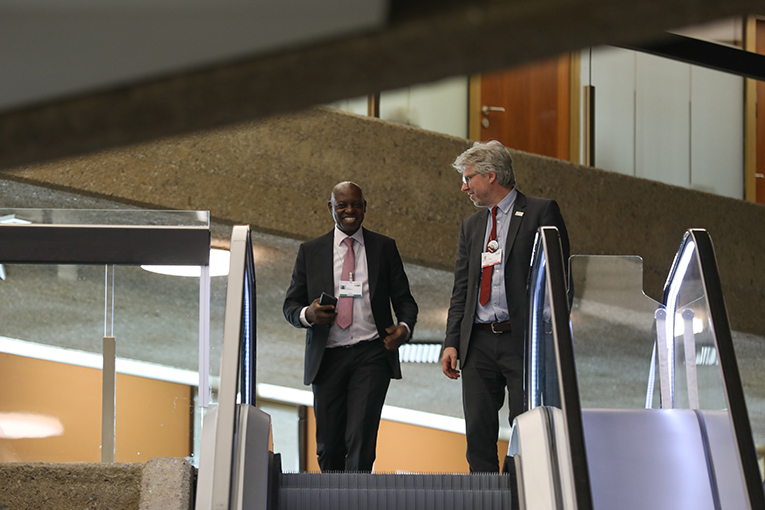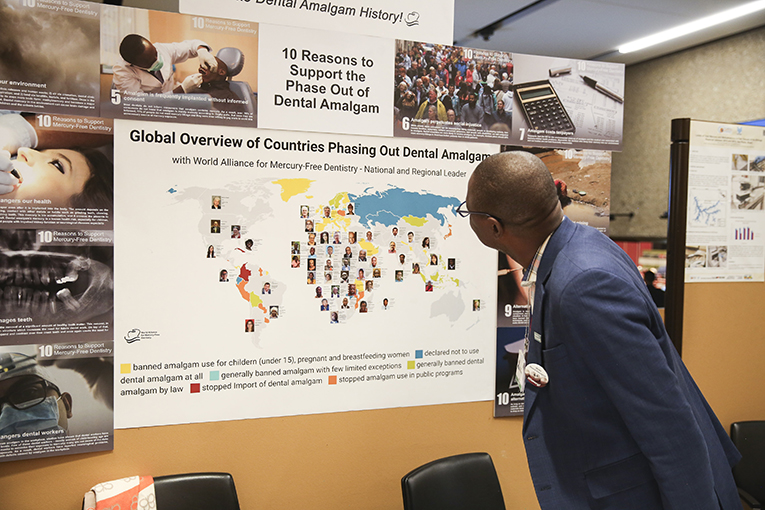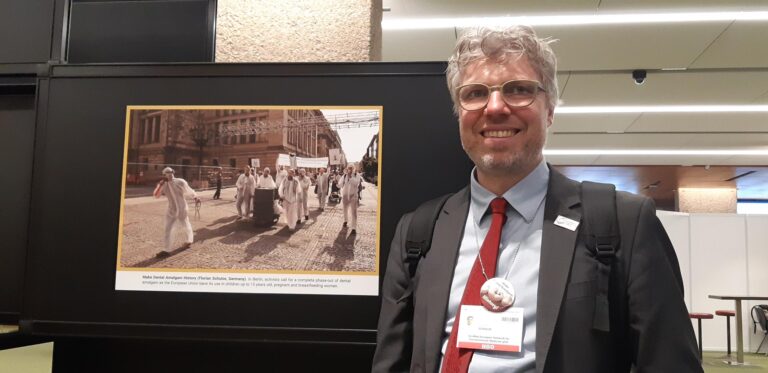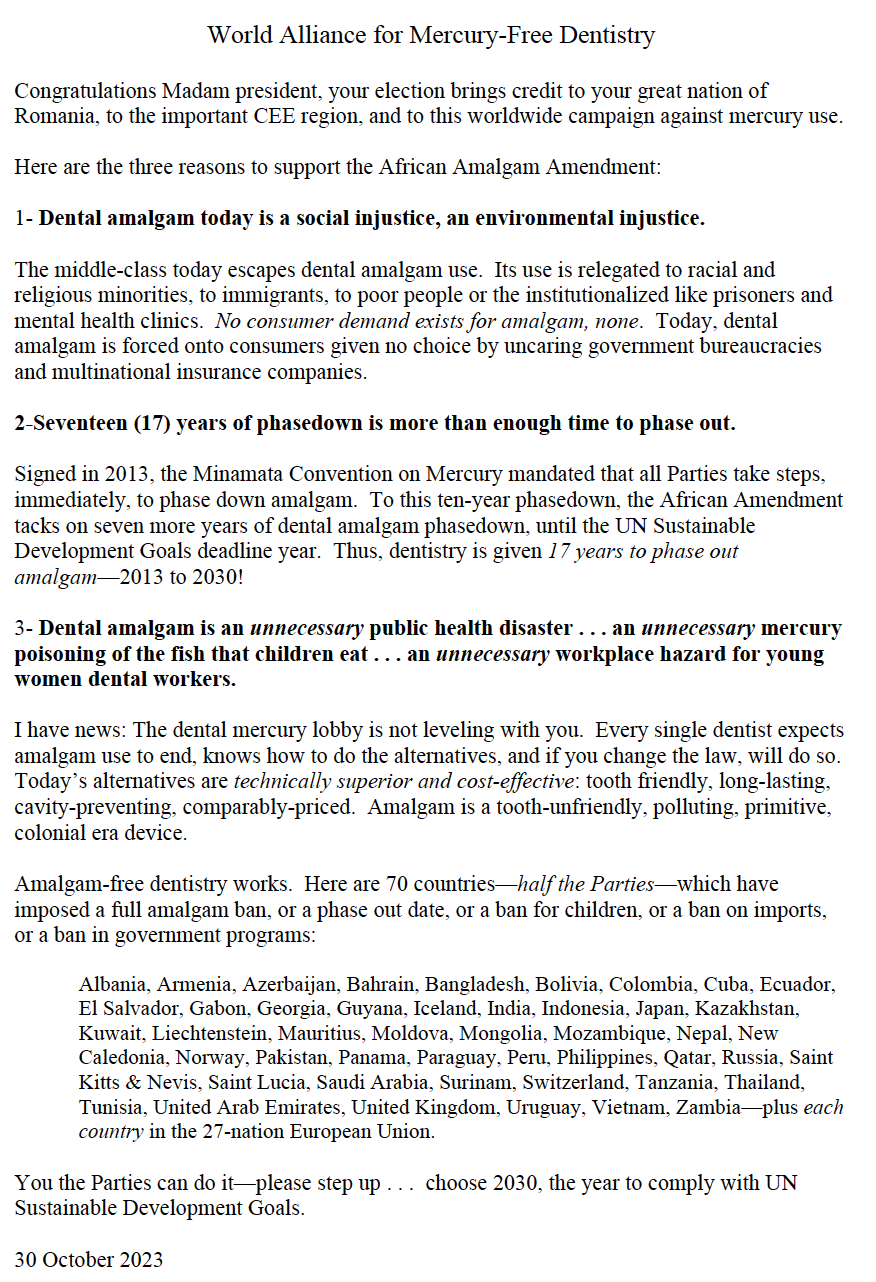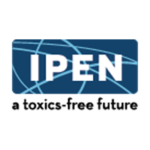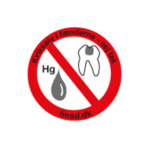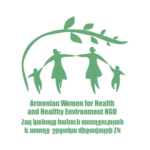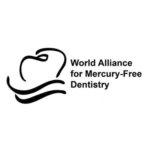COP 5 of the Minamata Convention agreed that all countries which have not yet phased out dental amalgam shall present a national action plan to do so. The first plan is due by 31 December 2025 and may consider that the next Conference of the Parties will discuss to phase-out the manufacturing and trade of dental amalgam by 2030 and the phase-out in government insurance policies and programmes.
The African Group’s proposal to phase out the manufacture, import and export of amalgam in 2030 was discussed at COP5, but there was no agreement in time, so it had to be postponed to COP 6 in November 2025.
Australia, Argentina, Bahrain, Botswana and Burkina Faso in name of the African Region, Burundi, Chile, Colombia, the European Union, Gabon, Indonesia, Jordan, Kuwait, Norway, Pakistan, Saudi Arabia, Switzerland, Tuvalu and Uganda have spoken out in favor of the proposal and were supported by many other countries, but dissenting voices came particularly from Brazil, Canada, India, the UK and the US, but also from South Africa.
Also the African proposal to additionally exclude or not allow by taking measures as appropriate, the use of dental amalgam in government insurance policies and programs was rejected, but this time in particular by Brazil, the EU and the US. The European Commission stated that it cannot rule on the statutory health insurance schemes of the Member States. So also this proposal is postponed to be discussed at COP6 in 2025.
Charlie Brown, President of the World Alliance for Mercury-Free Dentistry had highlighted the importance of it in his opening speach: “The middle-class today escapes dental amalgam use. Its use is relegated to racial and religious minorities, to immigrants, to poor people or the institutionalized like prisoners and mental health clinics. No consumer demand exists for amalgam, none. Today, dental amalgam is forced onto consumers given no choice by uncaring government bureaucracies and multinational insurance companies.”
Poland, Japan, Bolivia, El Salvador, Paraguay, Peru, Guyana, Saint Lucia, Uruguay and Mozambique have already withdrawn dental amalgam from public programs, effectively phasing it out. Croatia and the Czech Republic adopted a plan to facilitate uniform reimbursement for dental fillings regardless the material by 2025; in Finland and Slovakia, a composite restoration costs the patient the same as an amalgam restoration and Ireland, Slovenia and Hungary will alter its insurance to favor mercury-free fillings in the coming years.
Regarding the adopted National Action Plans, there are parallels to the very successful stepwise approach of the EU Mercury Regulation in 2017 which imposed the phase out of dental amalgam use for children, pregnant and breastfeeding women in 2018 and required the Member States to draw up National Action Plans to phase down dental amalgam in 2019 while announcing the evaluation of a general phase-out by 2030 in the following year.
The outcome of the National Action Plans in Europe was that 12 out of 27 Member States have directly adopted a Plan to phase out dental amalgam and many of them aligned the government insurance policies.
Parties to the Minamata Convention now have 2 years to develop their plan to phase down or phase out dental amalgam and many parties still have to take measures to protect children up to the age of 15, pregnant and breastfeeding women, which were due by 28 September 2023. It is recommended to combine these measures directly with a general phase-out plan and not to wait until the end of 2025.
👉 Here is the updated List of Provisions on Dental Amalgam
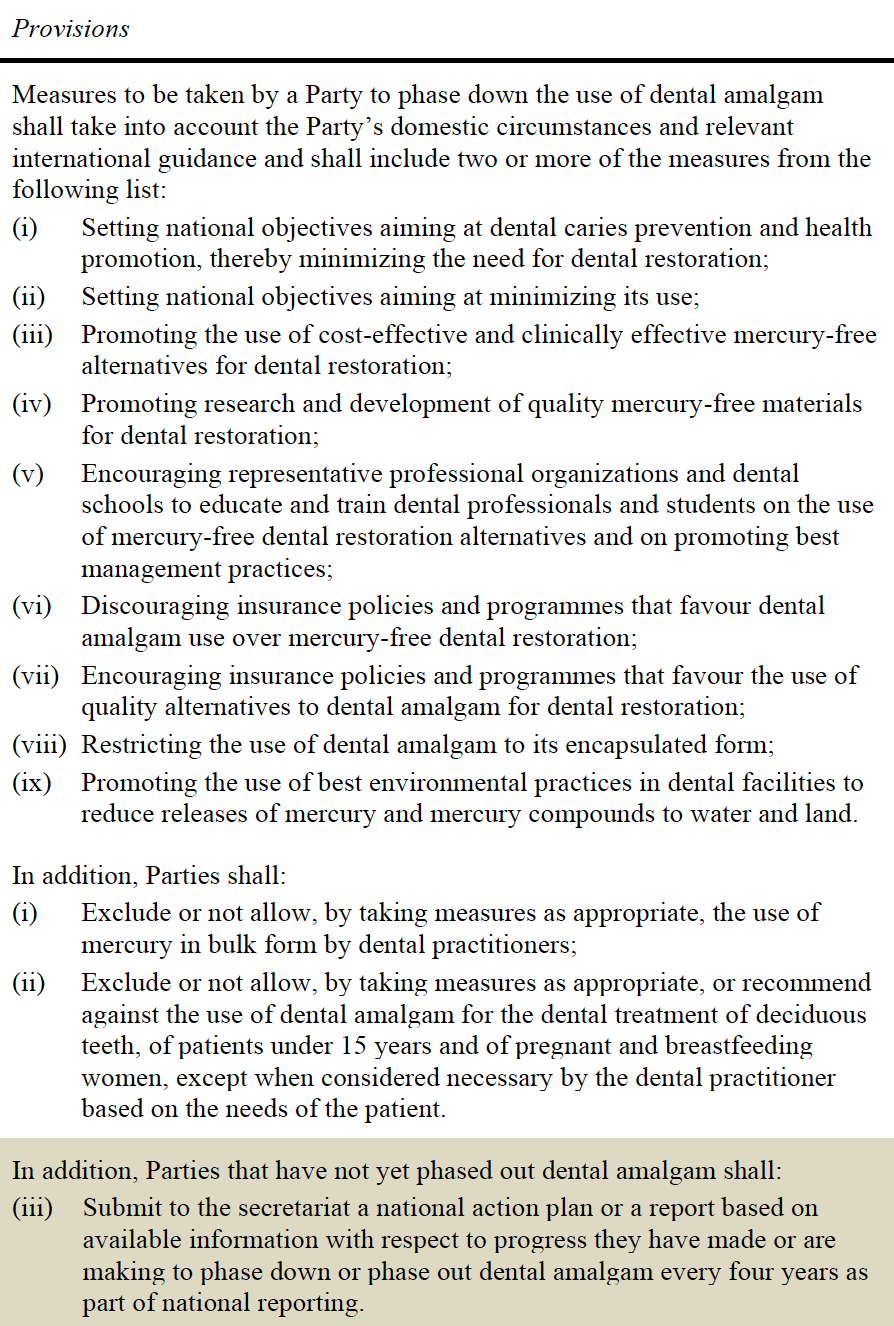
👉 Full Opening Statement of the World Alliance for Mercury-Free Dentistry:
Images:


